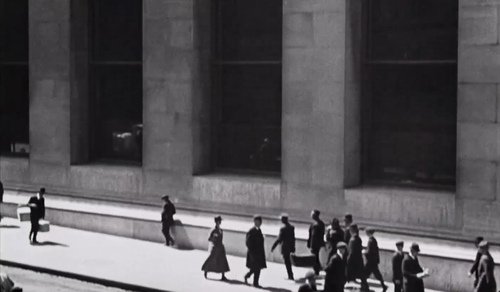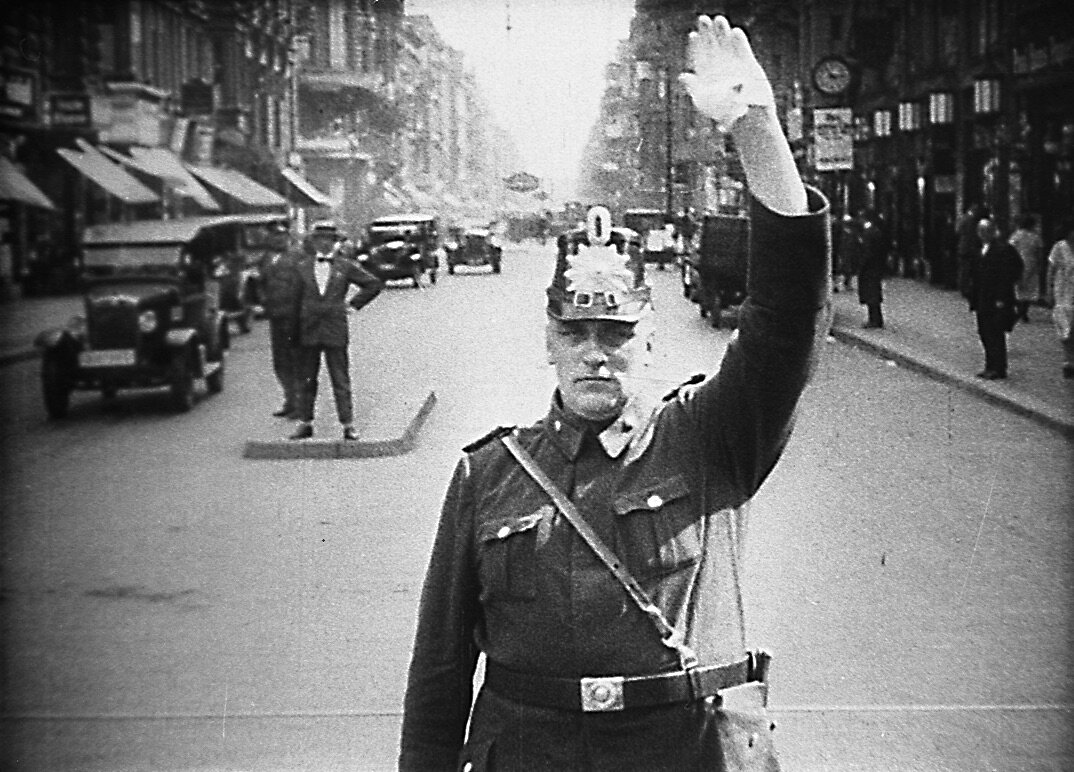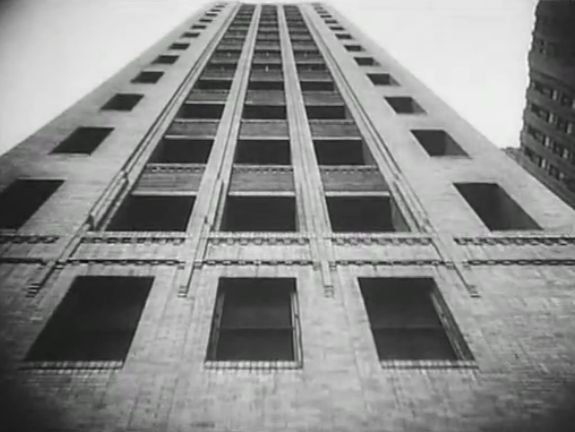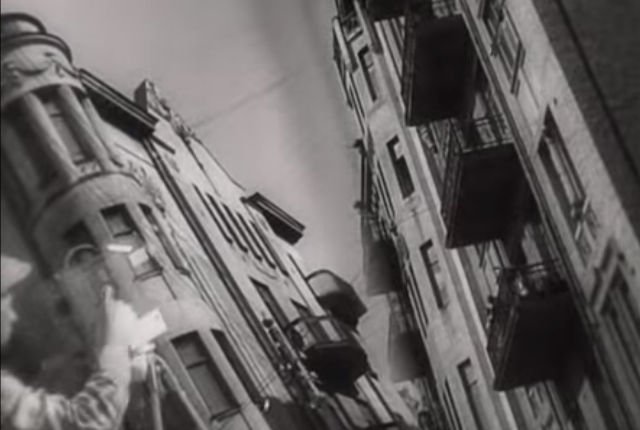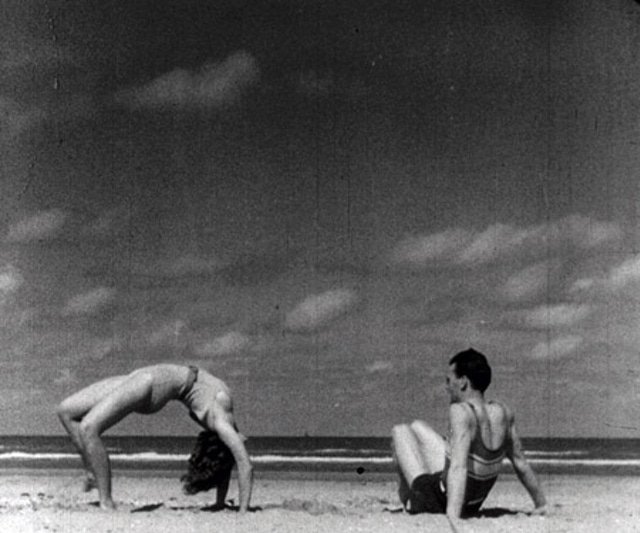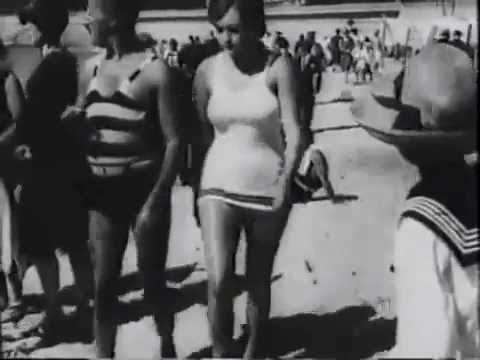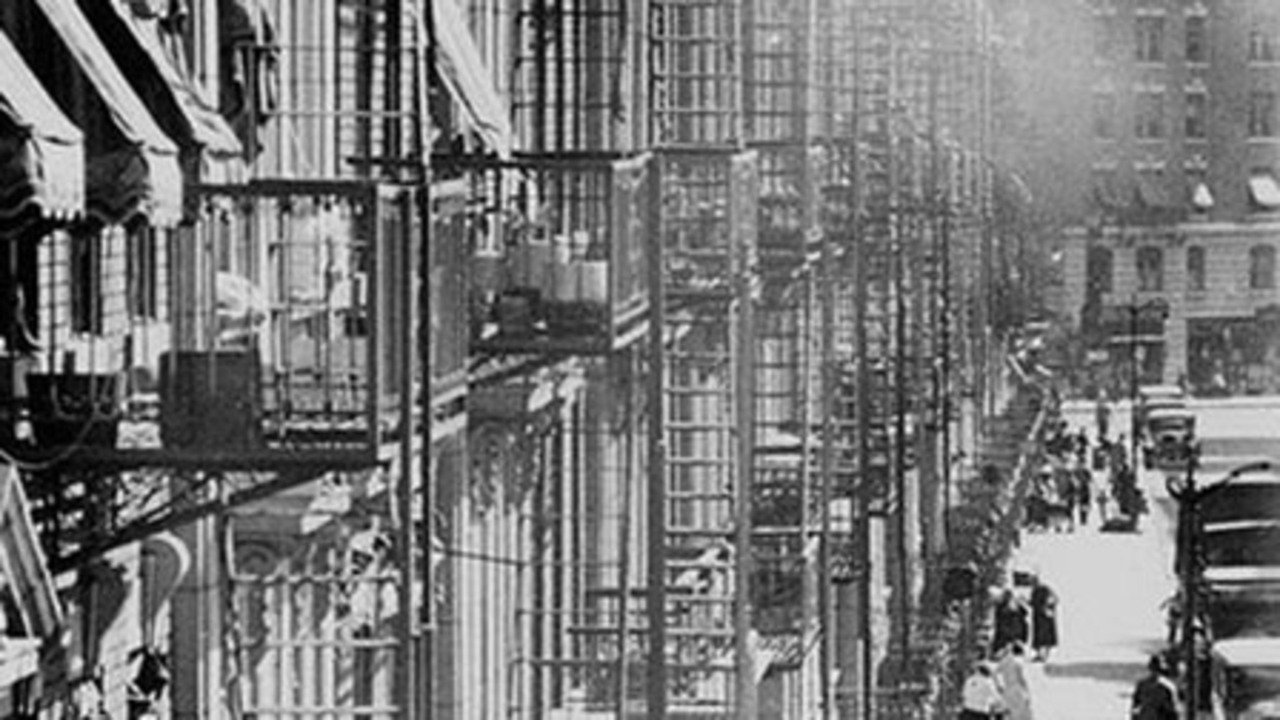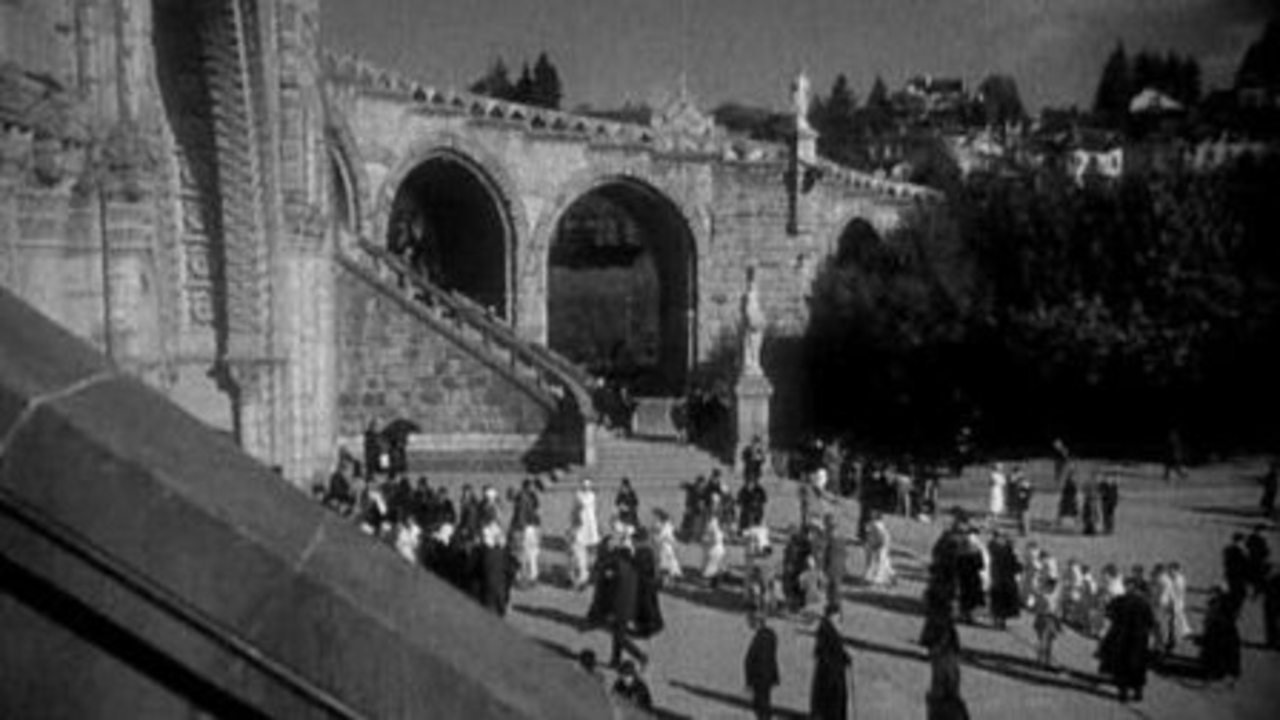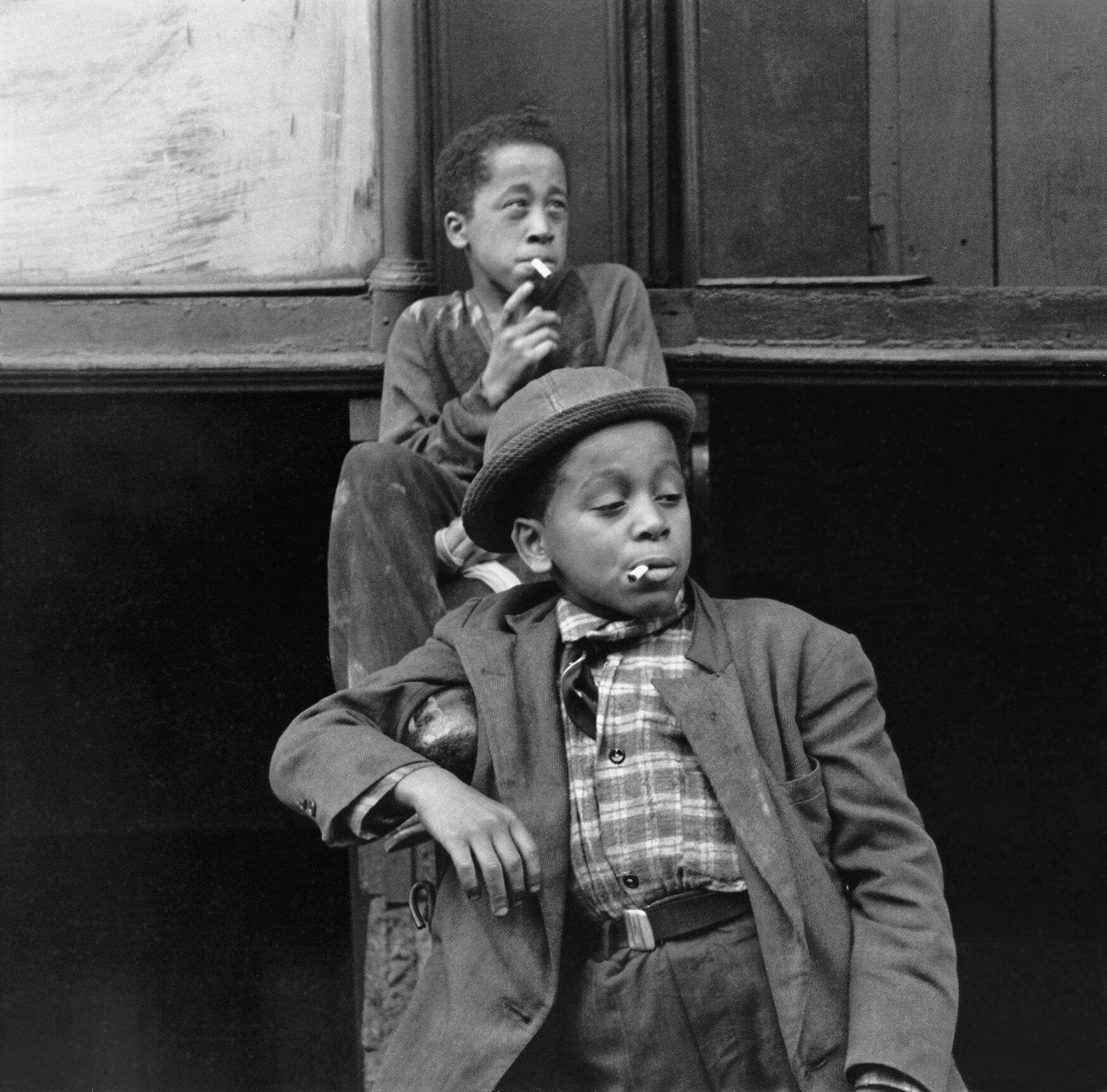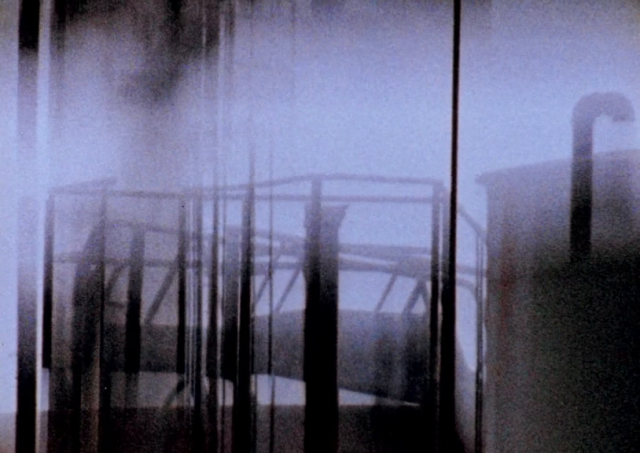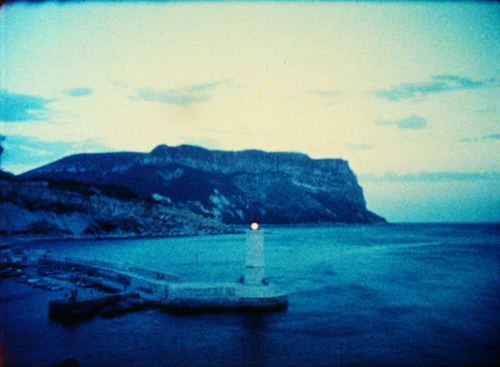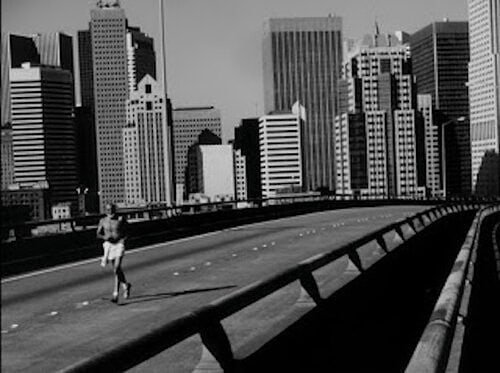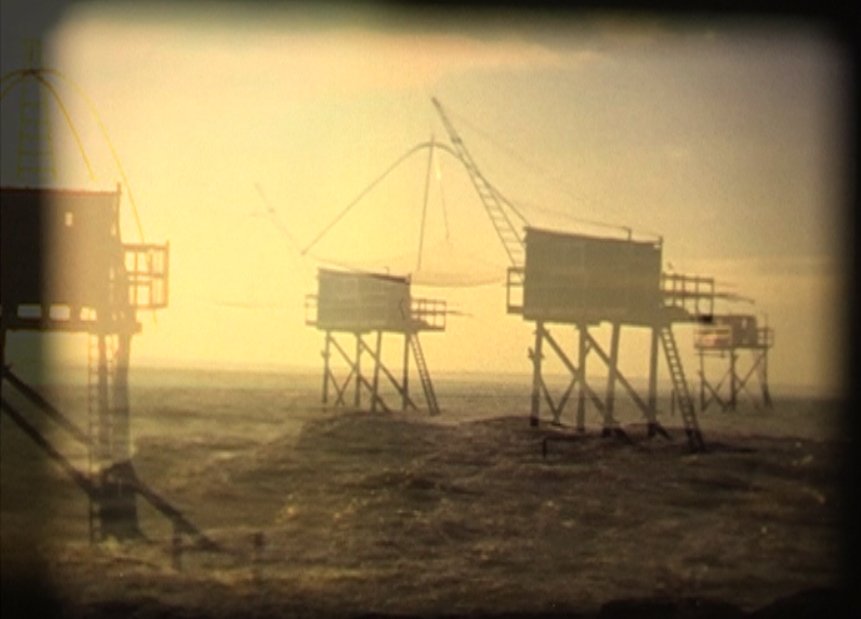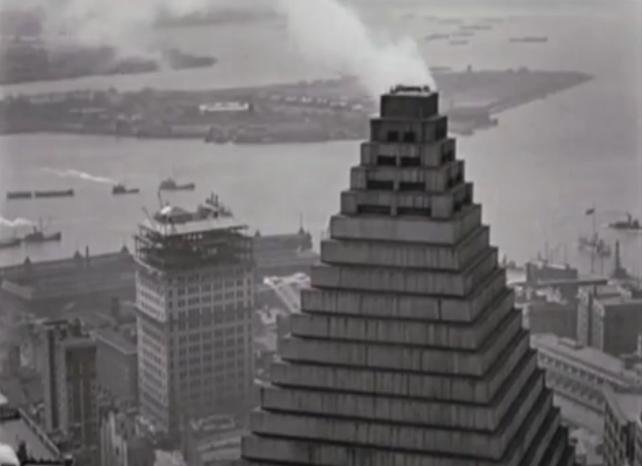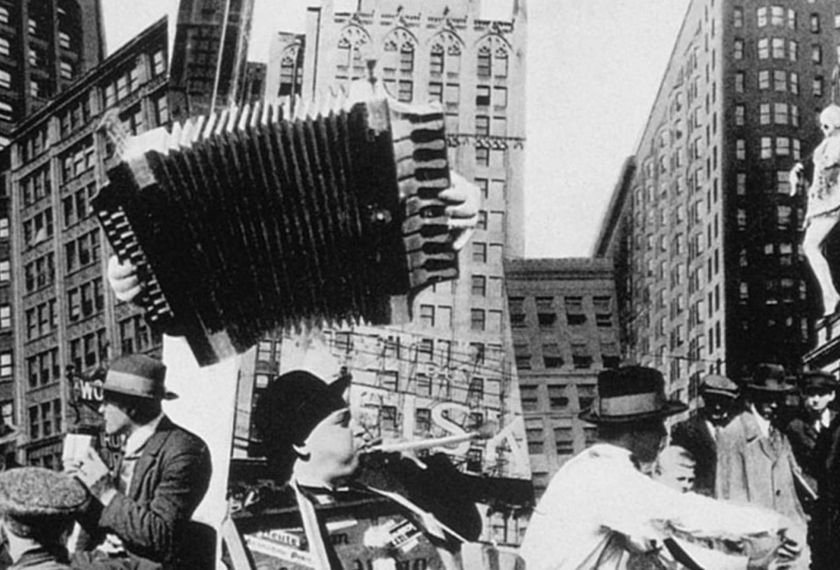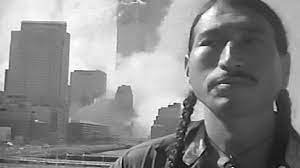CITY SYMPHONIES
During the 1920s, painters, photographers, and other artists in Europe and the United States, through the medium of film, furthered their ideas about the kinetic and plastic qualities of art. A genre of “city symphony” films emerged. These films were structured around the day in the life of a metropolis, from sunrise to sunset. Primarily employing techniques of straight photography, privileged camera positions and rhythmic editing patterns were employed to visualize representation of the objective world. Documentary filmmakers in the silent era tended to imbue the formal aspects of their films with a perspective that either celebrated industrial development, or else critiqued the social inequality that this evolution had wrought.
The form of this genre continued in the postwar era through the work of numerous experimental filmmakers. They greatly expanded the vocabulary of visual expression through an array of techniques, including the use of deliberate long takes, distortion of the image, single framing techniques, and collage via in camera image overlays, optical printing techniques, and digital methods, as well as inventive sound design.
Click here to read Jon Gartenberg’s essay on New York City Symphony films.
MANHATTA
Charles Sheeler & Paul Strand (US, 1921)
Paul Strand and Charles Sheeler collaborated on making MANHATTA, inspired by a poem of Walt Whitman’s. The design of their film extols the virtues of the skyscraper. Organizing their subject matter to emphasize the forms of objects, Strand and Sheeler shape the documentary images into reflections of formal patterns consistent with their work in the fine arts. In their movie, the artists transform images of skyscrapers and other man-made industrial creations into plays of light and shadow, and studies of geometry and linearity.
2009 - BEST SPECIAL FEATURES ON DVD (BONUS)
BERLIN: SYMPHONY OF A GREAT CITY (BERLIN, DIE SINFONIE DER GROßSTADT) & MELODY OF THE WORLD (MELODIE DER WELT)
Walther Ruttmann (Germany, 1927)
Walther Ruttmann is a pioneer of modern multimedia art. His first short films are unique experiments with forms, colors, and rhythm, his innovative commercials connected abstract animation art with concrete messages. The symphonic documentary BERLIN, DIE SINFONIE DER GROßSTADT is one of the most famous silent classics.
SKYSCRAPER SYMPHONY
Robert Florey (US, 1929)
"The hard-edged graphics of SKYSCRAPER SYMPHONY stand in contrast to other New York 'scenics' produced during the 1920s. Composed of skewed perspectives, Robert Florey’s camera looks straight up the domineering concrete behemoths. And it is hard to determine if the film mimics symphonic form as the title suggests or whether it advances a new methodology in musical-visual shot progression that reflects the alien structures depicted." - Bruce Posner
Dziga Vertov (USSR, 1929)
Vertov's feature film presents urban life in Moscow and the Ukrainian cities of Kiev and Odessa during the late-1920s. From dawn to dusk Soviet citizens are shown at work and at play, and interacting with the machinery of modern life. The film demonstrates Vertov's “Kino-Eye” theory endowing the movie camera with the flexibility of the human eye. The camera climbs up the side of a building, under and above trains, over factories, along steel girders, inside houses Its techniques are extravagant: hand-held camera, elaborate tracking shots, frozen frames, rapid editing, multiple superimpositions, split screens, and constant displacement in time and space. To the extent that it can be said to have "characters", they are the cameramen of the title, the film editor, and the modern Soviet Union they discover and present in the film.
SCENES OF OSTEND (IMAGES D'OSTENDE)
Henri Storck (Belgium, 1929-1930)
It could be said that this is the first film of conceptual experimentation. Shot after shot (the montage is quite rapid), Storck offers a glimpse of a fragment, an aspect that orders its multiple constitutive elements. They invoke their cinematographic equivalents, light, framing, the scale of the shots, movement, rhythm…A poetic and kinetic shock, without fiction or sound, which relieves film from its narrative obligation and restores it to the world of sensations that it alone is able to carry.
2018 - PERSONAL CHOICE (Lorenzo Codelli, Juror)
LISBOA, CRÓNICA ANEDÓTICA
Leitão de Barros (Portugal, 1930)
J. Leitão de Barros’ first feature film is a truly remarkable work, fusing a wide range of aesthetic influences and artistic traditions, namely the European cinematographic avant-gardes. It is consciously within the genre and lineage of “urban symphonies.”
Jay Leyda (US, 1931)
"Leyda’s first film, shot silent at a time when sound flooded American movie theaters, is a city symphony on an intimate scale, not of a metropolis like Berlin or Moscow but of a New York borough. Leyda’s camera affectionately focuses on children, streets, shops, and shoppers." - Robert A. Haller
VISIONS OF LOURDES (VISIONS DE LOURDES)
Charles Deukeukelaire (Belgium, 1932)
“Beginning with conventionally beautiful mountain vistas, the film slowly moves toward the area around the sacred grotto and finally to shots within the grotto itself. There are shots of shop-windows full of Lourdes souvenirs (including candy made with holy water from the shrine), but these come in fairly late, avoiding a blatant focus on the commercialization of the site and the notion that those hoping to be healed of illness and deformity are being exploited.” - Kristin Thompson
VIBRATION OF GRANADA (VIBRACIÓN DE GRANADA)
José Val del Omar (Spain, 1935)
In VIBRATION OF GRANADA we encounter dancing rays of light and the trembling of water, shadows, and echoes. The introductory title sequence invites us on a poetic walk through the architecture of one garden, one palace, and one Eden. The camera watches the sky, constantly returning to it.
IN THE STREET
Helen Levitt, Janice Loeb and James Agee (US, 1948)
The filmmakers used hidden 16mm cameras to capture the everyday lives of Harlem residents in the neighborhood. Margaret Bodde commented on the energy of the past that Levitt’s powerful cinematography reveals: “[Levitt] really knows these streets. She was born in Brooklyn and worked in New York City her whole career. For her, the lens was a window into the souls of the people that she was photographing, whether it was still images or moving pictures.”
N.Y., N.Y.
Francis Thompson (US, 1958)
Although immediately cited by Aldous Huxley as 'new form of visionary art,' the film originals sat under the filmmaker’s bed for nearly 30 years. The experience remains an exquisite time capsule that not only documents Manhattan during the 1950s but also, in the words of the New York Times, proffers 'one of the few genuine masterpieces' of the burgeoning experimental film movement in the United States.
CASTRO STREET (THE COMING OF CONSCIOUSNESS)
Bruce Baillie (US, 1966)
Bruce Baillie transforms a walk down a street in Richmond, CA into a voyage of discovery. Entirely handmade, sans optical printers or computers, everyday events are shifted into something fantastic. The viewer is awakened to a universe of swirling sights and sounds, marvelous moments unfolding in time.
CASSIS
Jonas Mekas (US, 1966)
A small port in South of France, a lighthouse, the sea, shot from just before the sunrise until just after the sunset, all day long, frame by frame, a frame or two every second or every few minutes.
MAGNUM BEGYNASIUM BRUXELLENSE
Boris Lehman (Belgium, 1978)
¨A living chronicle of the residents of the Béguinage neighborhood – so named because it is situated on the site of the former Brussels béguinage. Designed as an encyclopaedic inventory, the film comprises around thirty chapters, each imbricated with the other, like so many pieces of a puzzle, or resembling a termite mound with many intersecting galleries. It takes place within the space and interstices of a day, starting at dawn and ending at night.¨- Boris Lehman
CITYSCAPES
Dominic Angerame (US, 1982-2010)
Angerame’s city films show urban deconstruction and cinematic construction as two sides of the same coin, as de-construction, even. The filmmaker’s work searches for unfamiliar views of seemingly familiar things: cities, landscapes, faces, bodies. The filmmaker’s desire is to make everyday images unfamiliar, to learn to see them fresh and to estrange them from our senses. Angerame stylizes his urban landscapes into half-abstract, extremely painterly compositions; his films are often layered as collages through double and triple exposures.
LOS
James Benning (US, 2000)
LOS is the second of Benning’s CALIFORNIA TRILOGY and the one most focused on urban Los Angeles. Completed in 2001, it is systematically arranged in a composed tempo reminiscent of Miles Davis’s groundbreaking album, The Birth of the Cool. Here Benning uses ambient sounds for the soundtrack in his film, not jazz, but the overall pacing, tempo, and feel of the film captures the spirit of Southern California and Davis’s homage to the Southern California jazz experience of the 1950s.
NATIVE NEW YORKER
Steve Bilich (US, 2005)
Shot before, during and after 9/11, NATIVE NEW YORKER took several years of filming with a 1924 hand-cranked Cine-Kodak camera. Shaman Trail Scout 'Coyote' takes a journey which transcends time, from Inwood Park (where the island was traded for beads and booze), down a native trail (now 'Broadway'), into lower Manhattan (sacred burial ground, now including the newest natives of this island empire).
TATITUDE
Vivian Ostrovsky (US, 2009)
An update of Jacques Tati's classic LES VACANCES DE MONSIEUR HULOT. Seagulls squawk, waves crash and swimmers cavort in endless summer days spent on the beach.


